- Share
- Like
- Tweet
- Digg
- Tumblr
- VKontakte
- Love This
- Odnoklassniki
- Meneame
- Blogger
- Amazon
- Yahoo Mail
- Gmail
- AOL
- Newsvine
- HackerNews
- Evernote
- MySpace
- Mail.ru
- Viadeo
- Line
- Comments
- SMS
- Viber
- Telegram
- Subscribe
- Skype
- Facebook Messenger
- Kakao
- LiveJournal
- Yammer
- Edgar
- Fintel
- Instapaper
- Copy Link
Architecture and design consortium Cardin Ramirez Julien + Aedifica have won the international architecture competition of the new flagship institution in Montréal, the Rio Tinto Alcan Planetarium. The design proposal stood out from more than 60 entries for the quality and imagination.
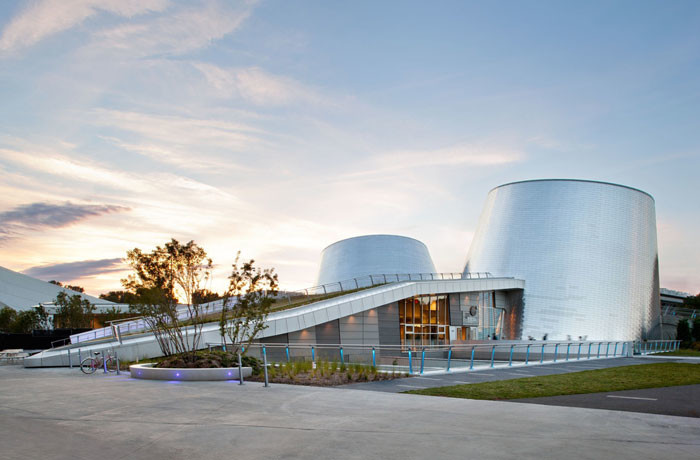
Image © Stéphane Brügger
The site was carefully selected for its unique urban qualities as well as its historical landmarks such as the Olympic Stadium and the Biodôme, which attest to significant chapters in Québec’s past. The design proposal creates a special connection with the surrounding architecture, while adding a touch of greenery to a site otherwise dominated by mineral elements.
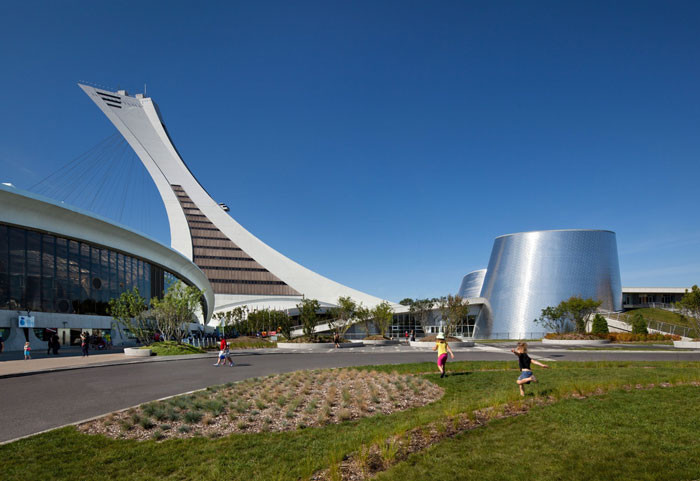
Image © Stéphane Brügger
Creating a sense of contact with nature was crucial to the project. The building showcases two enormous truncated cones pointing towards the sky, reminescent of large telescopes opening up to the starry sky. The feature elements draw attention to the site by creating a strong visual identity among the neighbouring buildings.

Image © Stéphane Brügger
To encourage users to frequent the site and make it their own—one of the project’s main objectives—the designers created a range of human-scale outdoor environments. The Olympic site’s concrete slab was topographically manipulated to create a new publicly accessible landscape. Reworked and reoriented to make way for both interior and exterior public spaces, the new configuration affords better flow as well as ease of movement between different levels. A “constellation” of isles of greenery completes the design.
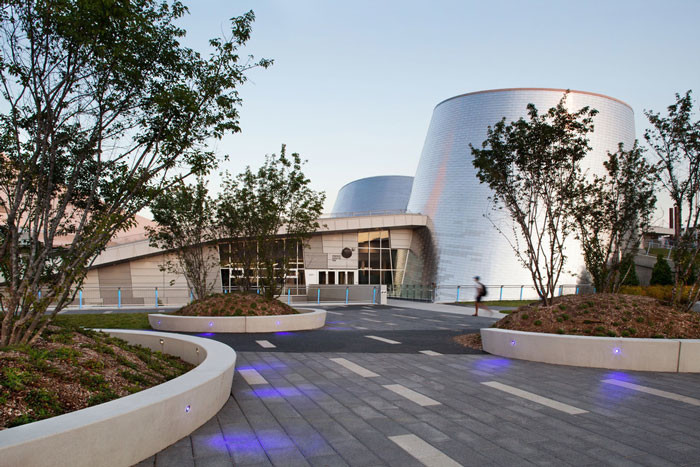
Image © Stéphane Brügger
The planetarium was divided into three levels. The first, dedicated to groups, links to the Biodôme and mechanical areas. The second (ground floor) is given over to public spaces and the two Star Theatres, while the third houses office space.
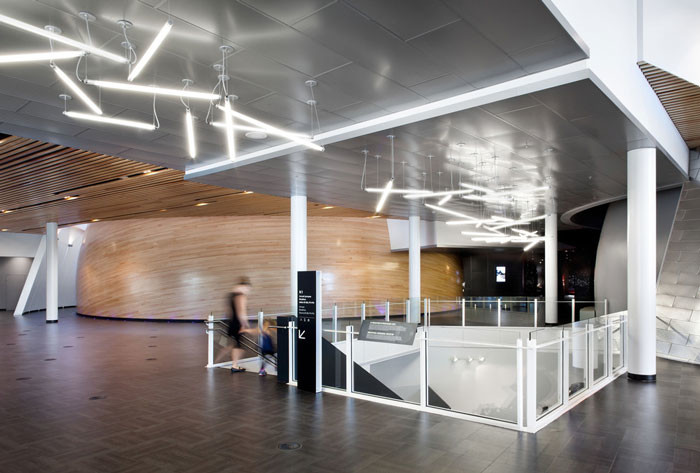
Image © Stéphane Brügger
Beneath the two cones are two half-spheres, each one housing a spectacular theatre. Equipped with the latest in stage equipment technology, each theatre is unique in its genre and offers a fully immersive experience. Their shape makes them the perfect vehicles for presenting the sky. In this, they represent an innovative rethink of performance spaces by their designers. To enhance the immersive experience, the hemisphere of the Chaos Theatre (a multimedia theatre with no fixed seating) was extended downwards, with all elements integrated into an architectural casing that provides the room’s sole absorptive surfaces. For the Milky Way, an astronomical theatre with fixed seats, the central floor was raised 50 centimetres, which serves to lower the horizon and make it “disappear.”
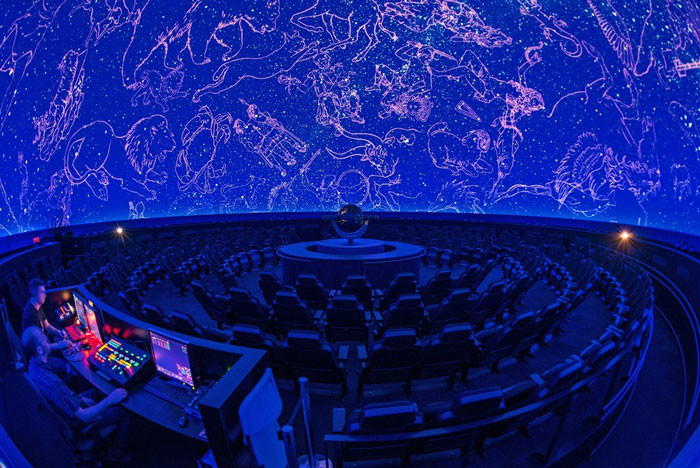
Image © Stéphane Brügger
Wood has taken center stage in the project as a methapor backing up the idea that humans were probably in the forest the first time they noticed the starry night sky. Wood was incorporated into the sphere of the Milky Way Theatre featuring sinuous curves reminescent of contours in nature, while simultaneously evoking the surface of planets like Saturn and Jupiter.

Image © Stéphane Brügger
The Rio Tinto Alcan Planetarium harnessed cutting-edge technologies to the full expertise and creative ingenuity of its architects, engineers and contractors, who have a marked interest in sustainable buildings and renewable energy sources. The structure aims to obtain LEED New Construction Platinum certification.
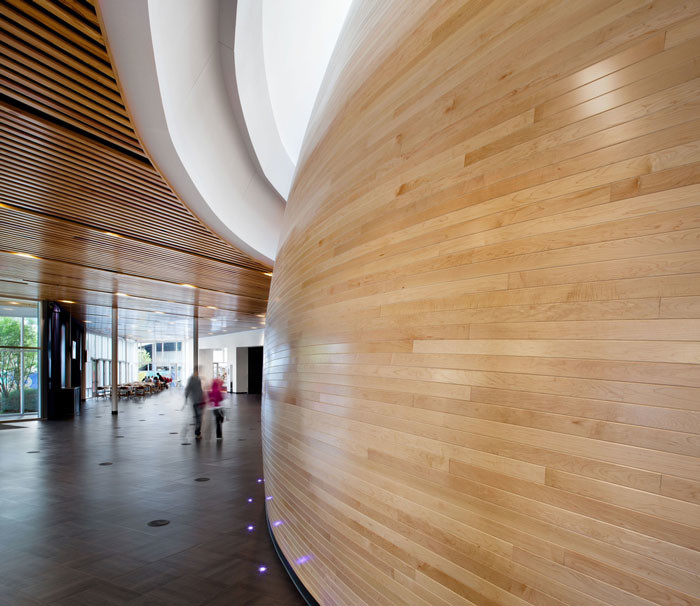
Image © Stéphane Brügger
The accessible green roof evokes this desire in particular: visitors can enjoy a green space that, much like a natural crest or rise, offers new views of the immediate surroundings.
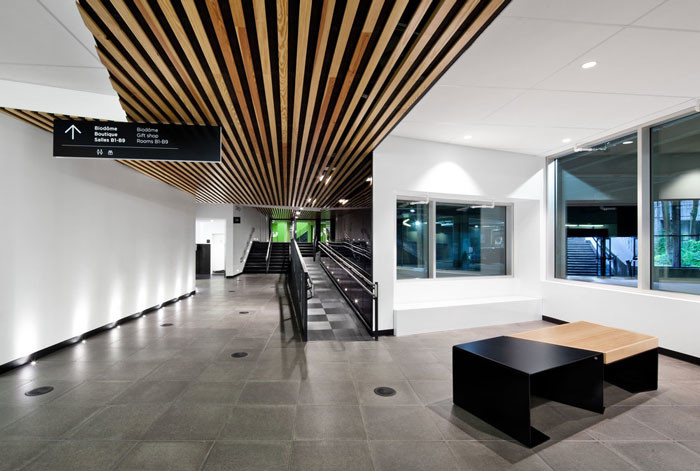
Image © Stéphane Brügger
As soon as they’re through the main entrance, visitors note the high degree of natural light. The closer they get to the theatre, the more the light level decreases, allowing the eye to gradually adapt to the dimness and eventual full darkness required for the show.
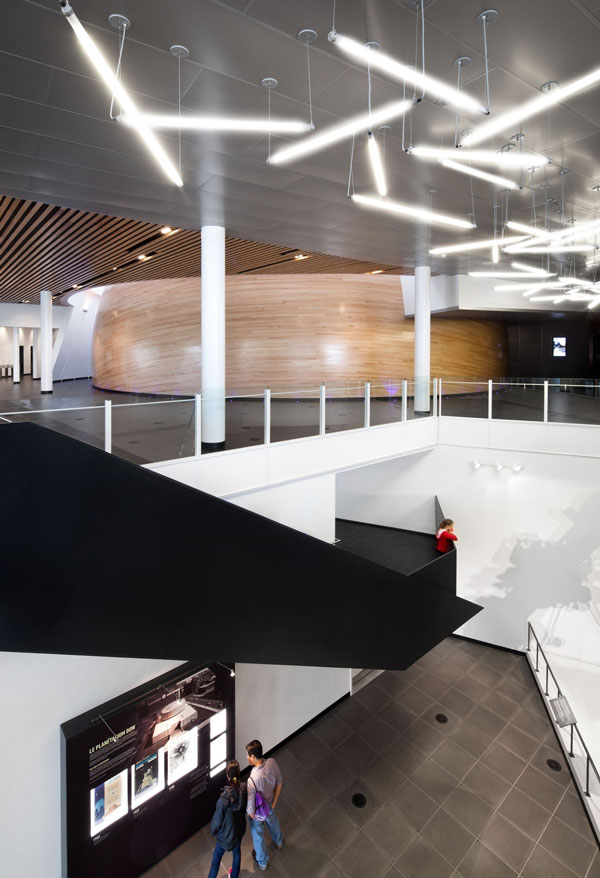
Image © Stéphane Brügger
With the new Rio Tinto Alcan Planetarium, SPACE FOR LIFE brings together four institutions all dedicated to the question of life, in the broadest sense of the term: a unique place that illustrates the interdependency of nature. Together, the Botanical Garden, Insectarium, Biodome and Rio Tinto Alcan Planetarium form a unique destination that reflects Québec’s knowledge, creativity and innovation.
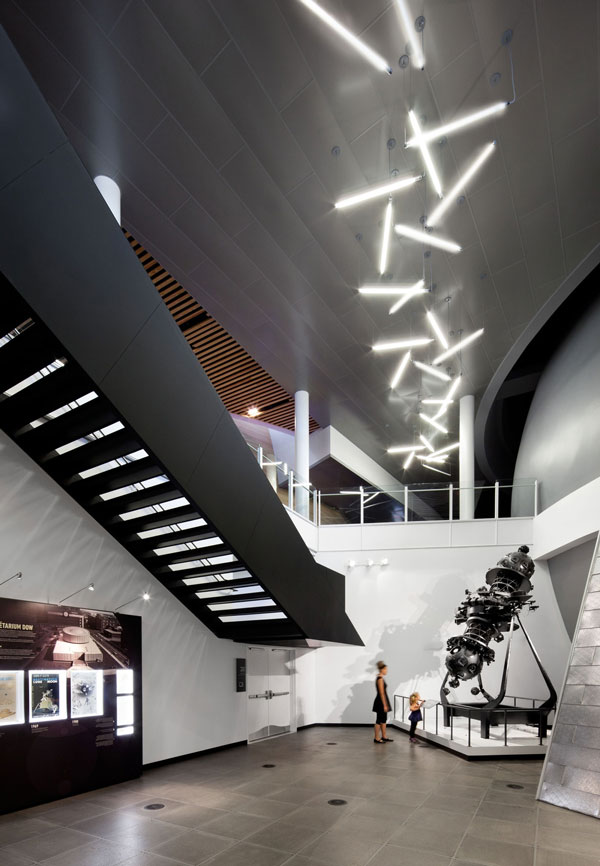
Image © Stéphane Brügger
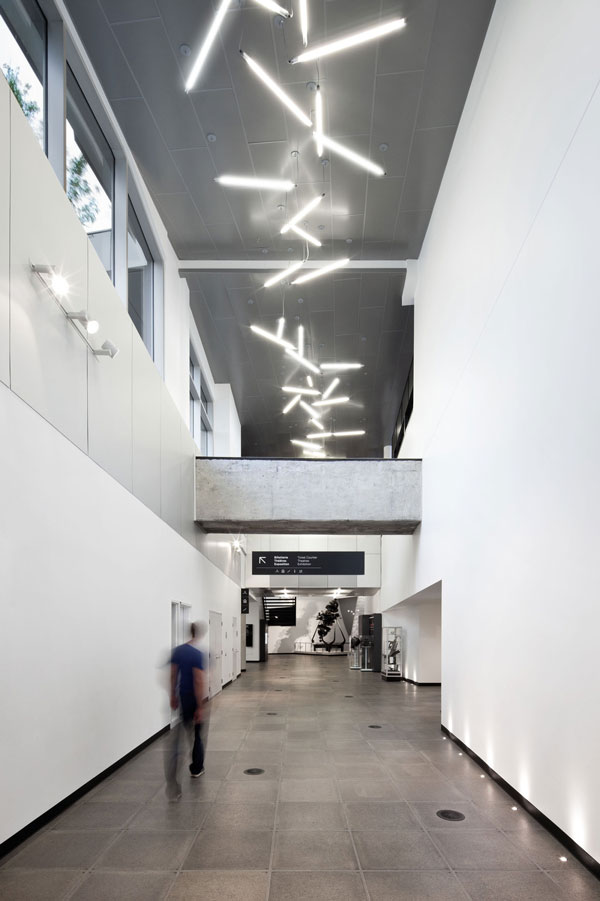
Image © Stéphane Brügger

Image © Stéphane Brügger
Drawings
Facts:
Project name: Rio Tinto Alcan Planetarium
Project location: 4801 Pierre-De Coubertin Avenue, Montréal, Québec H1V 3V4
Client’s name: Espace pour la vie
Joint Venture: CARDIN RAMIREZ JULIEN + ÆDIFICA
Opening: April 2013
End of work: Septembre 2013
Mechanic and electrician: Dupras Ledoux
Structure and civil engineering: SNC Lavalin
Scenography and multimedia: Go Multimedia
Landscape architecture: Fauteux et associés architectes paysagistes
Food services: Bernard et associés
Building code consultant: Sylvie Destroismaisons
Consultant en enveloppe du bâtiment: Patenaude Trempe
Universal accessibility: Société Logique
LEED consultant: EXP
Photography: Stéphane Brügger
*All images and information courtesy of v2com.









